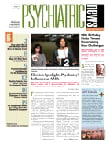The Internet isn't the only place where you can experience information overload. Researchers at Indiana University School of Medicine and the University of North Carolina School of Pharmacy said that the labeling of your nearest bottle of medication can cause the same sensation of being overwhelmed by information (see
What Labeling Means).
In a study published in the May 23 Archives of Internal Medicine, Jon Duke, M.D., of the Regenstrief Institute and Indiana University School of Medicine, and his colleagues sought to produce comprehensive quantitative data on adverse drug event (ADE) labeling patterns. They also wanted to measure the effectiveness of the Food and Drug Administration's (FDA) guidelines, unveiled in 2006, which were intended to discourage the inclusion of "exhaustive lists of every reported adverse event, no matter how infrequent or minor."
To assess the effect of labeling patterns, the team captured all of the drug labels on the federal Web site DailyMed on December 17, 2009, and then developed a software tool known as the Structured Product Label Information Coder and Extractor (SPLICER) that used natural language processing to extract ADE data from drug data that were presented in Structured Product Label (SPL) format, the electronic labeling standard mandated by the FDA.
In 2010, Duke and one of his coauthors, Jeff Friedlin, D.O., also of the Regenstrief Institute and Indiana University School of Medicine, published a study of SPLICER's performance, showing the system is 94 percent accurate at extracting labeled adverse effects.
In this current study, Duke and colleagues extracted 534,125 ADEs from 5,602 SPLs. "The number of unique ADEs per label ranged from zero to 525, with a median of 49 and a mean of 69.8. At the upper extreme," the researchers reported, "we identified 588 labels having more than 150 ADEs and 84 labels with more than 300 ADEs."
Looking for general trends, Duke and colleagues found ADEs to be highest in medications associated with psychiatry, neurology, and rheumatology, and that newer medications had significantly more labeled ADEs than older medications. Labels for the 200 most commonly dispensed medications contained significantly more ADE warnings than did other labels.
Christine Cheng, Pharm.D., and Joseph Guglielmo, Pharm.D., both of the University of California, San Francisco, provided commentary on the study in the same issue, noting that Duke and colleagues "have provided us with a glimpse of the overwhelming numbers of ADEs that health care providers must sift through to make informed decisions toward the safe, effective use of a drug for an individual patient."
"Recent FDA guidelines do not appear to have reduced ‘overwarning’," said Duke and his colleagues, but they are sympathetic toward the agency's task: "This finding underscores the tremendous challenge faced by the FDA in reversing the longstanding trend toward overwarning. It is our hope that the baseline data provided by this study will inform the design and evaluation of future efforts to decrease the complexity of adverse event labeling."
Cheng and Guglielmo agreed, saying that "the recommendations set forth by FDA guidance documents provide an excellent starting point," but that "a validation process for drug labels linked to outcomes—including health care provider comprehension, perception of drug benefits, and risk and usability—as a decision making tool are needed."
Duke shared with Psychiatric News his personal ambitions for the FDA's response: "My hope is that the FDA requires ongoing reassessment of supporting evidence for listings that lack a clear causal relationship, provides support for innovative research in labeling including the creation of ‘personalized’ drug labels, and formalizes the definitions around ‘minor’ effects so that drugmakers can identify effects that may not merit inclusion."
Primary funding for the project was provided by the Regenstrief Institute and a National Institutes of Health/National Library of Medicine training grant.

